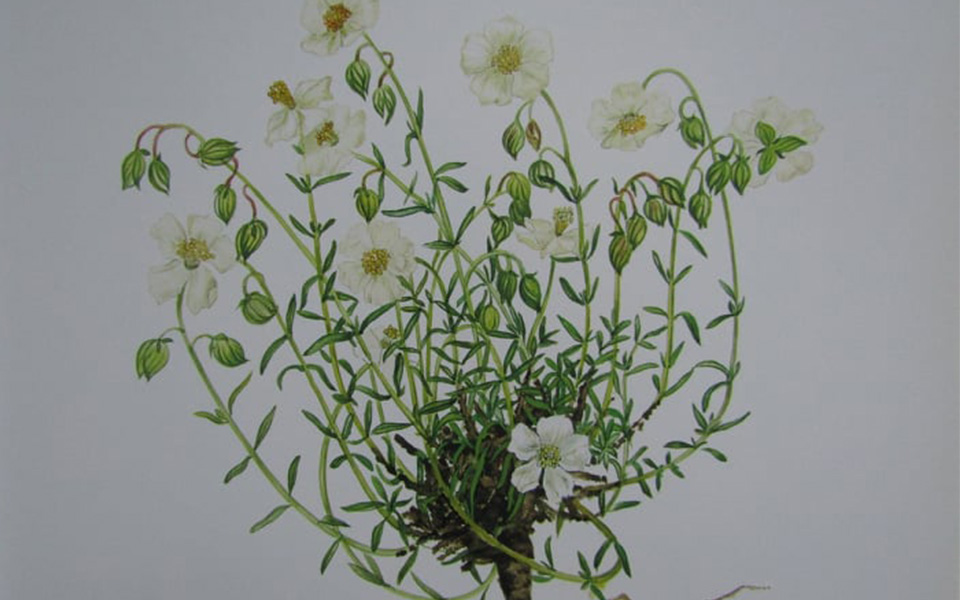Few people loved Greek nature as much as the late Niki Goulandris. In 1964, she and her husband, Angelos Goulandris, founded the Goulandris Natural History Museum, thus establishing an important center for ecological research and environmental education in Greece. Being an excellent botanical painter herself, she captured the beauty of Greek flora on paper in numerous ways.
The anthology “Wild Flowers of Greece” is perhaps the best example of her work, first published in 1968. Eleven years later, a renewed and enriched version of the book was published by Militos Editions, and it remains a timeless and precious source of knowledge, as well as aesthetics, in regard to the richness of Greek flora.

© Illustration by Niki Goulandris from the book "Wild Flowers of Greece", Militos Editions

© Illustration by Niki Goulandris from the book "Wild Flowers of Greece", Militos Editions
In the book’s foreword, Goulandris described capturing the flowers’ shapes and colors as a sensory, spiritual experience, so much so that she could recall the fresh aromas emanating from the flowers as she was drawing them.
She expressed her hope that the book would be an incentive for readers to seek these flowers in their own environments – where they have been growing for thousands of years. The book’s pages are filled with a total of 130 full-scale (book size: 27x37cm) colorful representations of Greek wildflowers, each accompanied by a short, informative text.

© Illustration by Niki Goulandris from the book "Wild Flowers of Greece", Militos Editions

© Illustration by Niki Goulandris from the book "Wild Flowers of Greece", Militos Editions
Greece’s flora is among the richest in Europe, numbering around 6,000 different species, of which 750 are found nowhere else on Earth. In proportion to its area, Greece thus has the highest concentration of endemic plants in the Mediterranean and in Europe.
Until we can travel again to the mountains, hills and seasides of Greece, Niki Goulandris’ timeless wildflowers, transcending time and seasons, bring spring to our homes. This, after all, is the ideal time to enjoy their beauty, as Greek nature is at its best from March until May in the lowlands, and from May until mid-July in the highlands.












